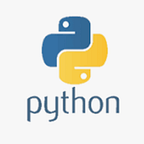A Beginner’s Guide to Supervised Machine Learning
Machine learning is a powerful field of artificial intelligence that has given rise to many applications we use daily, from recommendation systems to voice assistants. One of its fundamental branches is supervised machine learning, which allows computers to learn and make predictions from labeled data. In this beginner’s guide, we’ll demystify supervised machine learning and provide simple code examples to get you started on your journey.
Understanding Supervised Machine Learning
Supervised machine learning is a type of machine learning where an algorithm learns from labeled training data to make predictions or decisions without human intervention. It involves two main components:
- Features (Input): These are the variables or attributes that the algorithm uses for predictions. For instance, if you’re predicting house prices, features might include the number of bedrooms, square footage, and neighborhood.
- Target (Output): This is the value or category you want to predict. In the house price example, the target variable is the price of the house.
The learning process can be summarized as follows:
- The algorithm takes a dataset with labeled examples (input features and corresponding target values) as input.
- It learns patterns and relationships in the data to make predictions.
- Once trained, the model can make predictions on new, unseen data.
Types of Supervised Learning
Supervised learning can be further divided into two categories:
- Regression: In regression, the algorithm predicts a continuous value. For example, predicting house prices, stock prices, or temperature.
- Classification: In classification, the algorithm assigns data points to categories or classes. For example, classifying emails as spam or not spam, or identifying whether an image contains a cat or a dog.
Getting Started with Python and Scikit-Learn
Python is the go-to programming language for machine learning due to its simplicity and a rich ecosystem of libraries. Scikit-Learn (or sklearn) is a popular library for machine learning in Python. Let’s dive into some simple code examples to illustrate the basics of supervised machine learning.
Example 1: Linear Regression
Linear regression is one of the simplest algorithms in supervised learning used for regression tasks. In this example, we’ll predict a student’s exam score based on the number of hours they studied.
import numpy as np
from sklearn.linear_model import LinearRegression
# Sample data
X = np.array([1, 2, 3, 4, 5]).reshape(-1, 1) # Hours studied
y = np.array([45, 55, 65, 75, 85]) # Exam scores
# Create and train the model
model = LinearRegression()
model.fit(X, y)
# Predict the score for a student who studied for 6 hours
predicted_score = model.predict([[6]])
print(f"Predicted score for 6 hours of study: {predicted_score[0]:.2f}")Example 2: Logistic Regression (Classification)
Logistic regression is a commonly used algorithm for binary classification tasks. In this example, we’ll classify whether a student passes or fails an exam based on the number of hours they studied.
import numpy as np
from sklearn.linear_model import LogisticRegression
# Sample data
X = np.array([1, 2, 3, 4, 5, 6, 7, 8, 9, 10]).reshape(-1, 1) # Hours studied
y = np.array([0, 0, 0, 0, 1, 1, 1, 1, 1, 1]) # 0 for fail, 1 for pass
# Create and train the model
model = LogisticRegression()
model.fit(X, y)
# Predict the probability of passing for a student who studied for 6 hours
probability_pass = model.predict_proba([[6]])[0][1]
print(f"Probability of passing with 6 hours of study: {probability_pass:.2f}")Conclusion
Supervised machine learning is a fundamental concept in the field of artificial intelligence and data science. It’s the foundation for many real-world applications, from predicting stock prices to diagnosing diseases.
As you delve deeper into the world of supervised machine learning, you’ll encounter more complex algorithms and datasets. However, the basic principles remain the same: learn from data, make predictions, and iterate. Whether you’re a student or a professional, supervised machine learning is a valuable skill that can open doors to a wide range of exciting opportunities in the data-driven world.
Data Science Journey
Thank you for your time and interest! 🚀
You can find even more content at Data Science Journey💫
